英語で日本紹介!PART1【文化・歴史・地理】海外旅行や国内で、簡単フレーズまとめ

2年前でしょうか。
タイ旅行🇹🇭に行った事があるのですが、道に迷っている時に現地の方が話しかけてきてくれて、道順を教えていただきました。
その際に「中国人?」と言われたので「自分は日本人です」と答えました。 すると、
「日本行きたいから、どういう国か紹介してよ〜( ^ω^ )」
と言われました。
急に言われたから、、とか言い訳しません。恥ずかしながらほとんど喋れませんでした。。
はー悔しい( ・∇・)!!
はい、そんなわけでブログを見ていつでも思い出せるよう「日本の紹介」使える簡単フレーズまとめて見ました!
- 1. 日本の<文化>を紹介
- 1.1. Kabuki is a typical Japanese theatrical art.
- 1.2. A Shamisen is a three-stringed Japanese instrument.
- 1.3. Tea ceremony has a long inherited tradition.
- 1.4. A Haiku is the world’s shortest poem. It consists of 17 syllables of 5, 7, 5.
- 1.5. The Katana is appreciated not only as a weapon but also as a work of art.
- 1.6. Japanese Ukiyo-e has greatly influenced European art.
- 1.7. Japanese culture has been greatly influenced by China.
- 2. 日本の<歴史>を紹介
- 2.1. Japanese history begins in the Old Stone Age.
- 2.2. Political power fell into the hands of the samurai class from noblemen in the 12th century.
- 2.3. The Shougun was the top samurai, who held ultimate power and founded the Shogunate.
- 2.4. The feudal society under the Edo Shogunate lasted 260 years.
- 2.5. The first U.S. – Japan trade treaty was concluded in 1858.
- 2.6. The Edo Shougunate collapsed in 1867, and the new centralized Meiji government was established.
- 2.7. The New Meiji government tried hard to modernize Japan to catch up with the advanced Western countries.
- 2.8. The Pacific War lasted from December 8th, 1941 to August 15th, 1945.
- 2.9. Japan accepted the Potsdam Declaration on August 14th, 1945.
- 3. 日本の<地理>を紹介
- 3.1. Japan is an archipelago to the east of the Asian continent and on the western edge of the Pacific Ocean.
- 3.2. Japan consists of four main islands.
- 3.3. Japanese land is mountainous, and only 30% of it is plains.
- 3.4. Japanese land area is only 4% of that of the U.S.
- 3.5. Mt. Fuji is highest mountain in Japan.
- 3.6. The changes of the four seasons are very noticeable in Japan.
- 3.7. In Japan, the rainy season called “tsuyu" lasts from June through July.
- 3.8. Fall is the best season for tourists, when mountains change their colors beautifully.
- 3.9. Japan has a lot of hot springs because it has many volcanoes.
- 4. まとめ
日本の<文化>を紹介
Kabuki is a typical Japanese theatrical art.
(歌舞伎は、日本独特の演劇です。)
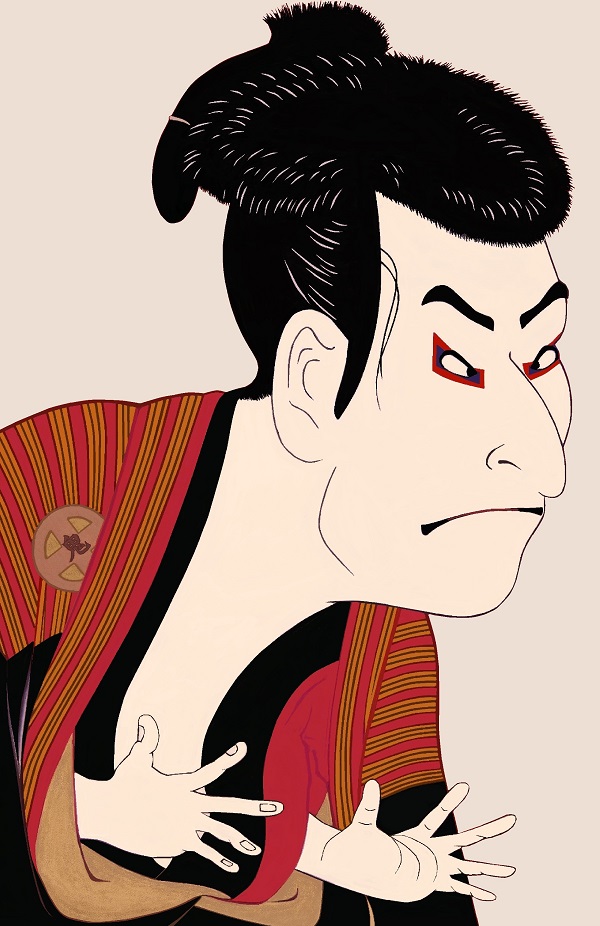
「歌舞伎」のフレーズは聞いた事はあるけど意味までは知らない外国の方が多いです。
短いフレーズで説明しましょう!
A Shamisen is a three-stringed Japanese instrument.
(三味線は、日本音楽に使われる三弦の弦楽器です。)
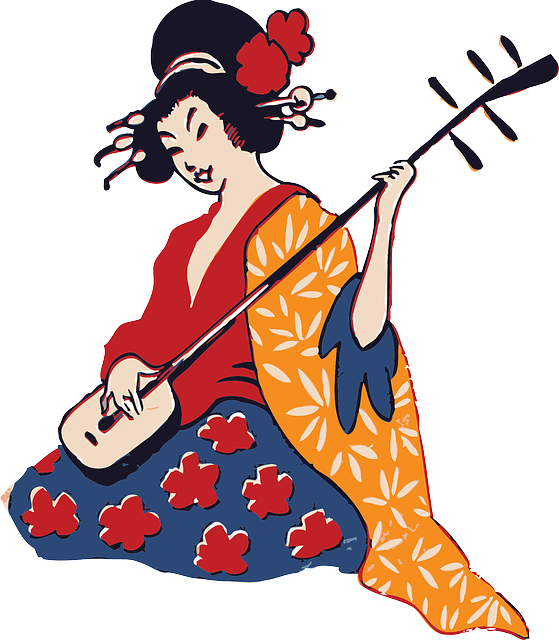
日本音楽に使われる楽器ですが、中国から日本に伝わった楽器が
元となったとされています。
Tea ceremony has a long inherited tradition.
(茶道には、古い伝統があります。)

「inherit(ed) trandition」=「伝統を受け継ぐ(受け継いだ)」という意味です。
国内で、外国の方と茶道をされる機会があったら、ぜひ使ってみましょう。
A Haiku is the world’s shortest poem. It consists of 17 syllables of 5, 7, 5.
(俳句は5・7・5の17音節からできている、世界で最も短い詩です。)
「syllable(シラブル)」=「音節」という意味です。
The Katana is appreciated not only as a weapon but also as a work of art.
(日本刀は武器であるばかりではなく、一つの美術品として鑑賞されてきました。)
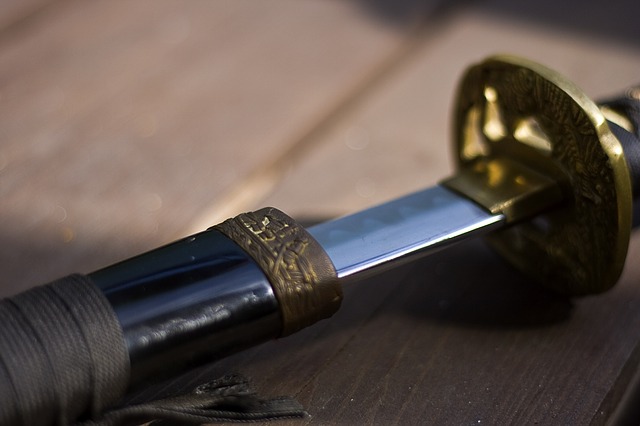
海外にとっても人気。見た目も切れ味も、ほんとカッコイイ…
Japanese Ukiyo-e has greatly influenced European art.
(日本の浮世絵は、ヨーロッパの絵画に大きな影響を与えました。)
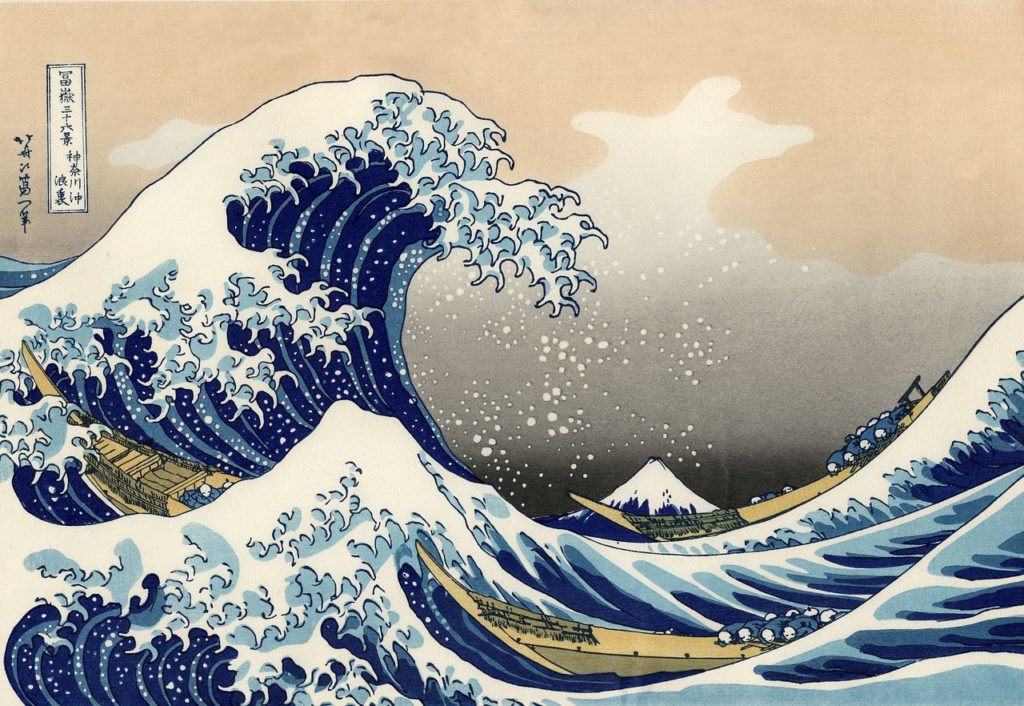
浮世絵といえば「葛飾北斎」が有名ですが
- フランス出身の画家「クロード・モネ」
- オランダ出身の画家「フィンセント・ファン・ゴッホ」
- フランス出身の作曲家「クロード・アシル・ドビュッシー」…etc
著名な画家から作曲家まで、「葛飾北斎」の浮世絵に影響を受けました。
興味があれば調べてましょう!
Japanese culture has been greatly influenced by China.
(日本は、中国から大きな文化的影響を受けています。)
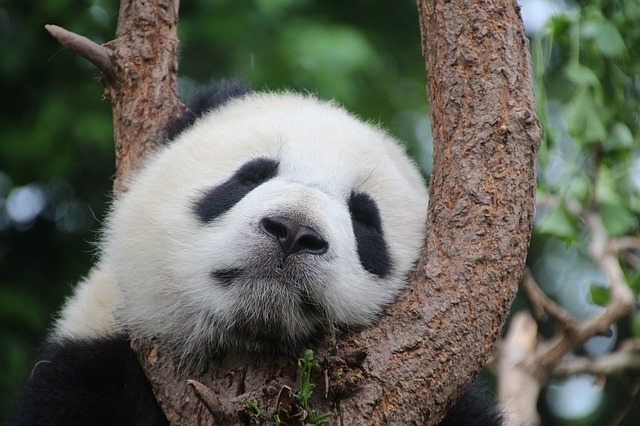
現在完了の「has been」=「〜とされている」という意味です。
日本の<歴史>を紹介
順々にいきましょう!
Japanese history begins in the Old Stone Age.
(日本の歴史は、旧石器時代から始まります。)
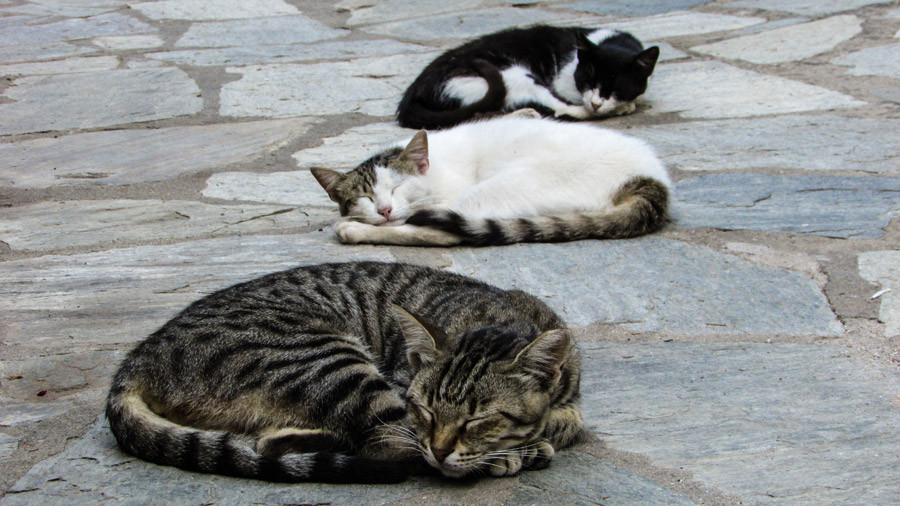
Political power fell into the hands of the samurai class from noblemen in the 12th century.
(12世紀に、政権は貴族の手から武士に移りました。)
「Political power」= 「政権」という意味です。
The Shougun was the top samurai, who held ultimate power and founded the Shogunate.
(天下の実権を握り、幕府で政治を行った武士の頭領を"将軍"と
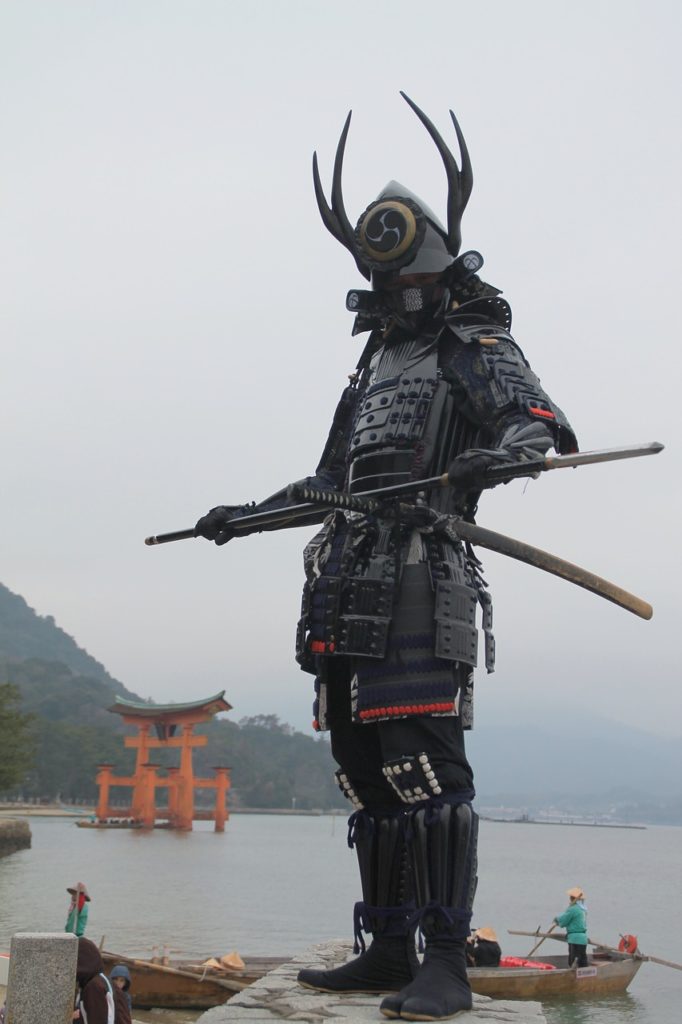
言います。)
「Shogunate」= 「幕府」という意味です。
The feudal society under the Edo Shogunate lasted 260 years.
(江戸幕府が支配した封建社会は、おおよそ260年間続きました。)
「The feudal society」 = 「封建社会」という意味です。
The first U.S. – Japan trade treaty was concluded in 1858.
(日本とアメリカの最初の通商条約は、1858年に締結されました。)
The Edo Shougunate collapsed in 1867, and the new centralized Meiji government was established.
(1867年、江戸幕府は倒壊し、明治新政府による中央統一政権が樹立されました。)

The New Meiji government tried hard to modernize Japan to catch up with the advanced Western countries.
(明治新政府は、欧米先進国に追いつこうとして、日本を近代化しようと努めました。)
「catch up with」 = 「追いつく」という意味です。
The Pacific War lasted from December 8th, 1941 to August 15th, 1945.
(太平洋戦争は、1941年12月8日から1945年8月15日まで続きました。)
「The Pacific War」 = 「太平洋戦争」という意味です。
Japan accepted the Potsdam Declaration on August 14th, 1945.
(日本がポツダム宣言を受諾したのは、1945年8月14日です。)
日本の<地理>を紹介
日本の国ってどこ?季節は?…などなどをご紹介!
Japan is an archipelago to the east of the Asian continent and on the western edge of the Pacific Ocean.
(日本は、アジア大陸の東方、太平洋の西部に位置する島国です。)
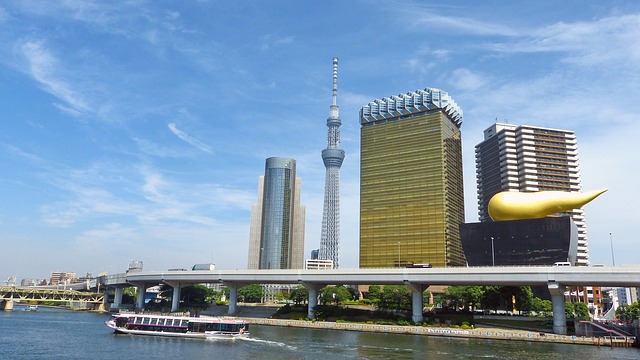
「archipelago(アーキペラゴウ)」 = 「諸島」や「群島」という意味です。
Japan consists of four main islands.
(日本は4つの大きな島から成り立っています。)
Japanese land is mountainous, and only 30% of it is plains.
(日本は山地が多く、平野は国土の3割ほどにすぎないです。)
「mountainous(マウンティナス)」 = 「山地の」や「山のような」という意味です。
Japanese land area is only 4% of that of the U.S.
(日本の面積は、アメリカの4%ほどしかありません。)
Mt. Fuji is highest mountain in Japan.
(日本で一番高い山は富士山です。)
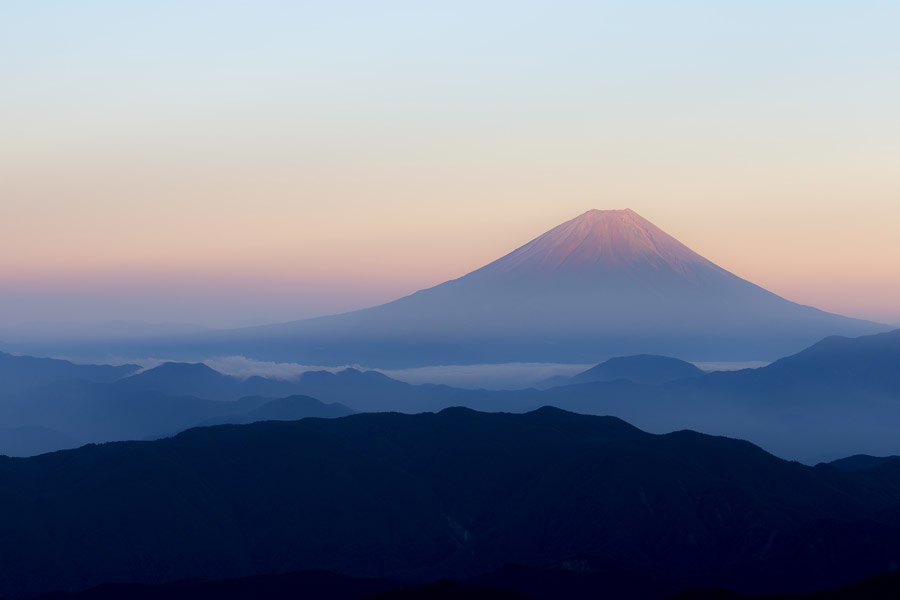
The changes of the four seasons are very noticeable in Japan.
(日本にいると四季の移り変わりがよくわかります。)
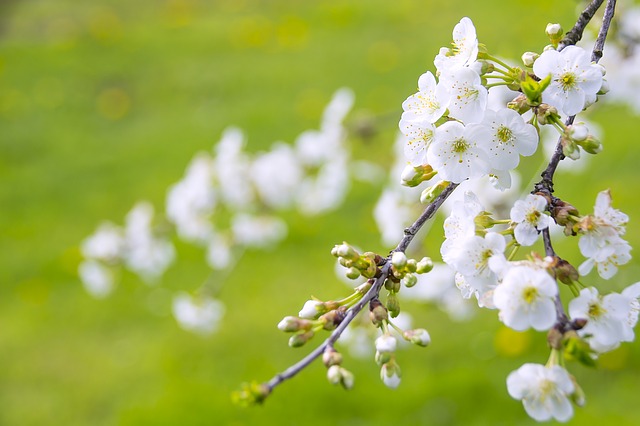
「noticeable」=「人目を引く」や「重要な」という意味です。
In Japan, the rainy season called “tsuyu" lasts from June through July.
(日本では、6月7月にかけて、梅雨と言う雨の多い季節を迎えます。)
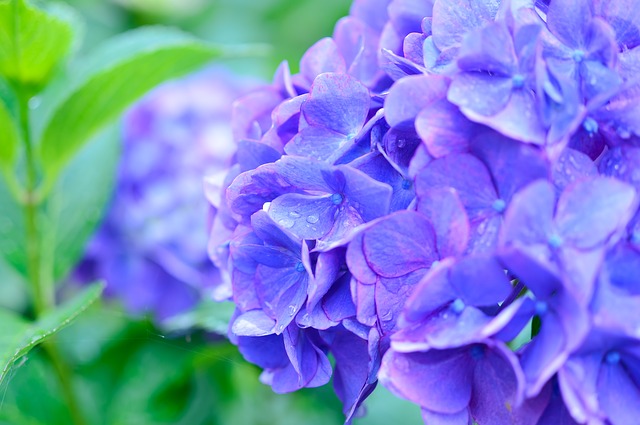
Fall is the best season for tourists, when mountains change their colors beautifully.
(山々が美しく紅葉する秋は、最も観光にふさわしい季節です。)
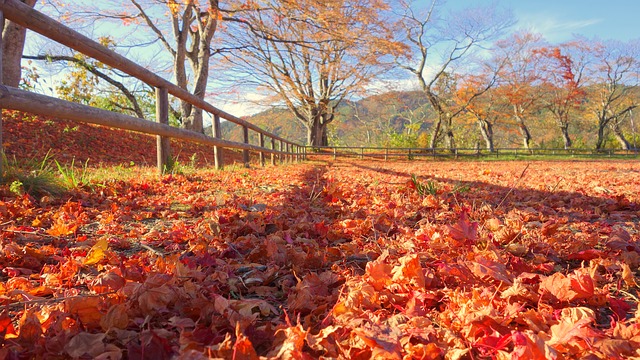
Japan has a lot of hot springs because it has many volcanoes.
(火山の多い日本には、たくさんの温泉があります。)
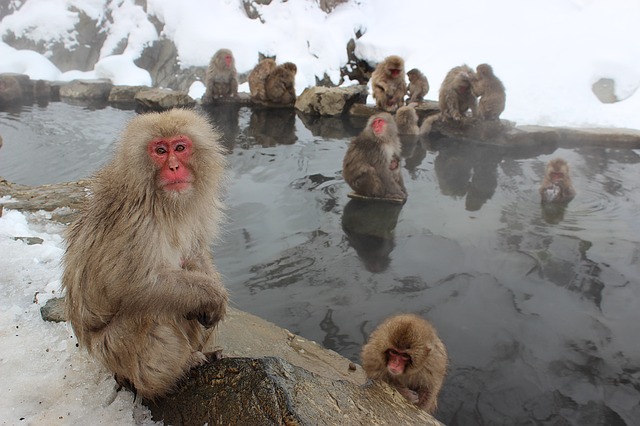
「volcano(es)」=「火山」という意味です。
まとめ
日本の<文化>を紹介
- Kabuki is a typical Japanese theatrical art.(歌舞伎は、日本独特の演劇です。)
- A Shamisen is a three-stringed Japanese instrument.(三味線は、日本音楽に使われる三弦の弦楽器です。)
- Tea ceremony has a long inherited tradition.(茶道には、古い伝統があります。)
- A Haiku is the world’s shortest poem. It consists of 17 syllables of 5, 7, 5.(俳句は5・7・5の17音節からできている、世界で最も短い詩です。)
- The Katana is appreciated not only as a weapon but also as a work of art.(日本刀は武器であるばかりではなく、一つの美術品として鑑賞されてきました。)
- Japanese Ukiyo-e has greatly influenced European art.(日本の浮世絵は、ヨーロッパの絵画に大きな影響を与えました。)
- Japanese culture has been greatly influenced by China.(日本は、中国から大きな文化的影響を受けています。)
日本の<歴史>を紹介
- Japanese history begins in the Old Stone Age.(日本の歴史は、旧石器時代から始まります。)
- Political power fell into the hands of the samurai class from noblemen in the 12th century.(12世紀に、政権は貴族の手から武士に移りました。)
- The Shougun was the top samurai, who held ultimate power and founded the Shogunate.(天下の実権を握り、幕府で政治を行った武士の頭領を"将軍"と言います。)
- The feudal society under the Edo Shogunate lasted 260 years.(江戸幕府が支配した封建社会は、おおよそ260年間続きました。)
- The first U.S. – Japan trade treaty was concluded in 1858.(日本とアメリカの最初の通商条約は、1858年に締結されました。)
- The Edo Shougunate collapsed in 1867, and the new centralized Meiji government was established.(1867年、江戸幕府は倒壊し、明治新政府による中央統一政権が樹立されました。)
- The New Meiji government tried hard to modernize Japan to catch up with the advanced Western countries.(明治新政府は、欧米先進国に追いつこうとして、日本を近代化しようと努めました。)
- The Pacific War lasted from December 8th, 1941 to August 15th, 1945.(太平洋戦争は、1941年12月8日から1945年8月15日まで続きました。)
- Japan accepted the Potsdam Declaration on August 14th, 1945.(日本がポツダム宣言を受諾したのは、1945年8月14日です。)
日本の<地理>を紹介
- Japan is an archipelago to the east of the Asian continent and on the western edge of the Pacific Ocean.(日本は、アジア大陸の東方、太平洋の西部に位置する島国です。)
- Japan consists of four main islands.(日本は4つの大きな島から成り立っています。)
- Japanese land is mountainous, and only 30% of it is plains.(日本は山地が多く、平野は国土の3割ほどにすぎないです。)
- Japanese land area is only 4% of that of the U.S.(日本の面積は、アメリカの4%ほどしかありません。)
- Mt. Fuji is highest mountain in Japan.(日本で一番高い山は富士山です。)
- The changes of the four seasons are very noticeable in Japan.(日本にいると四季の移り変わりがよくわかります。)
- In Japan, the rainy season called “tsuyu" lasts from June through July.(日本では、6月7月にかけて、梅雨と言う雨の多い季節を迎えます。)
- Fall is the best season for tourists, when mountains change their colors beautifully.(山々が美しく紅葉する秋は、最も観光にふさわしい季節です。)
- Japan has a lot of hot springs because it has many volcanoes.(火山の多い日本には、たくさんの温泉があります。)
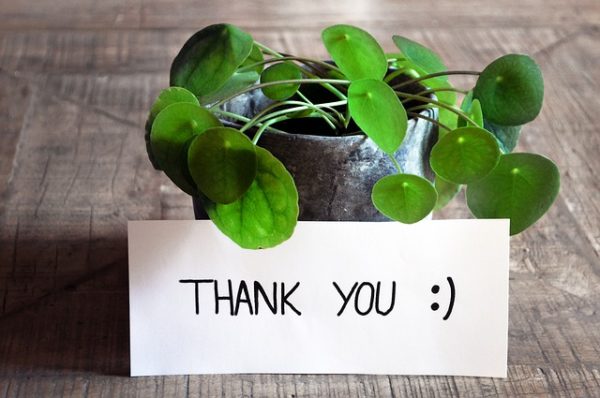
いかがでしたでしょうか?
次回は日本の【経済・教育・日常生活】をご紹介したいと思います!
お楽しみに〜( ^ω^ )

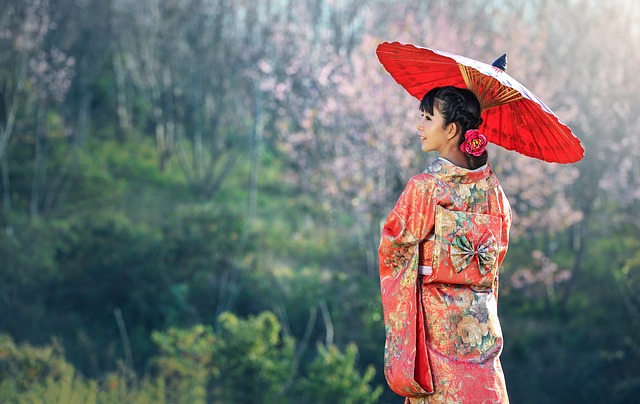
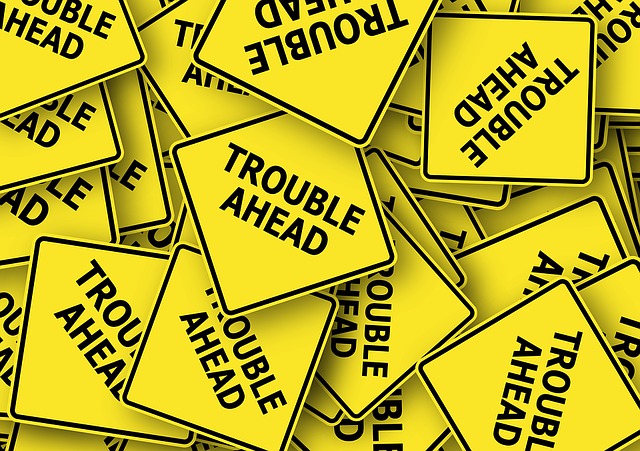
















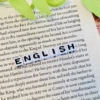


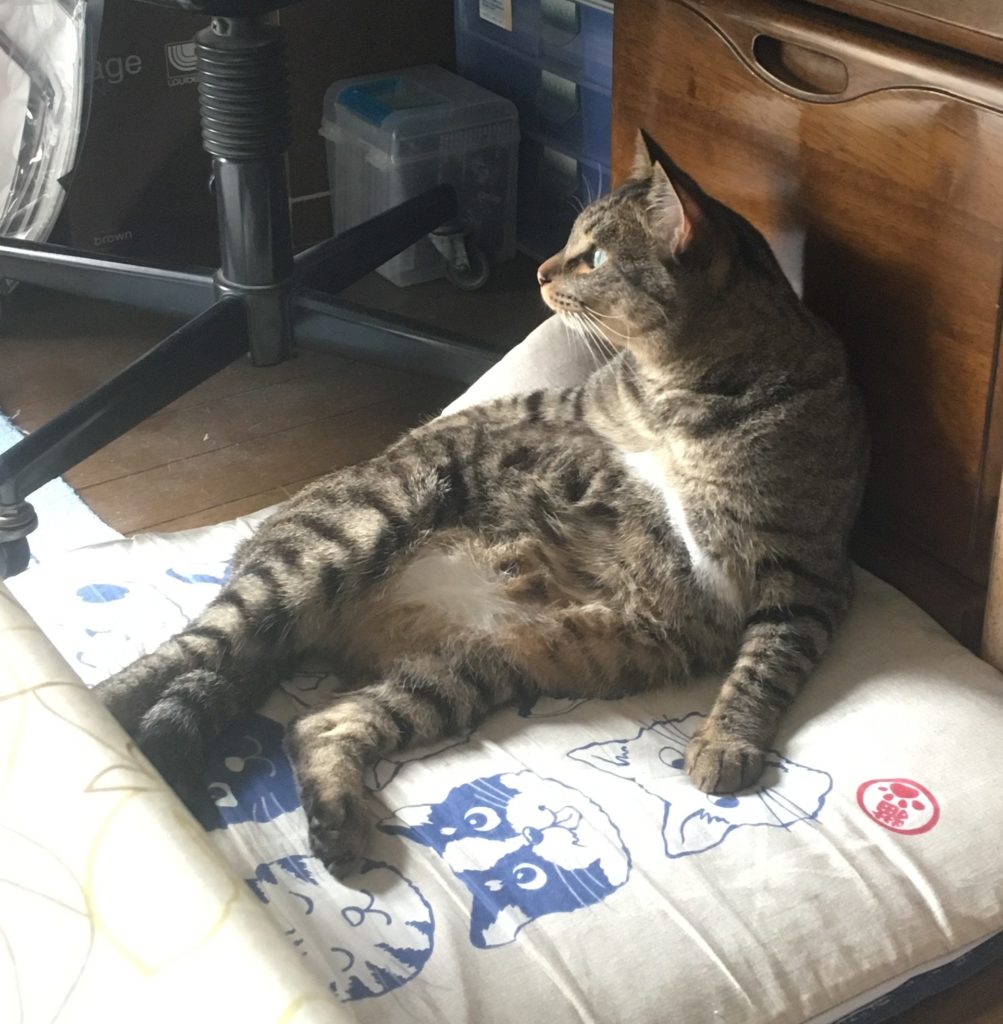
ディスカッション
ピンバック & トラックバック一覧
[…] 前 前の投稿: 英語で日本紹介!PART1【文化・歴史・地理】海外旅行や国内で、簡単フレーズまとめ […]